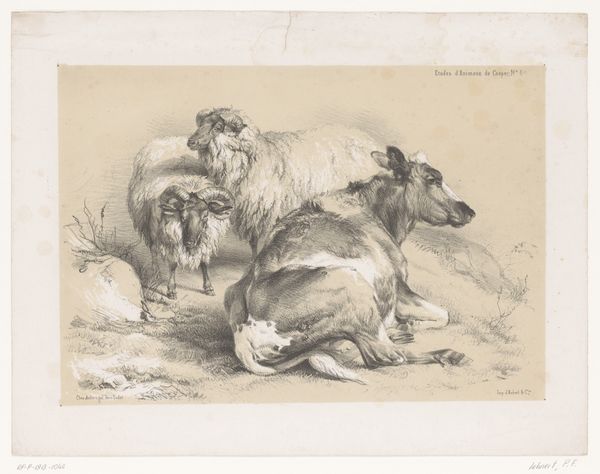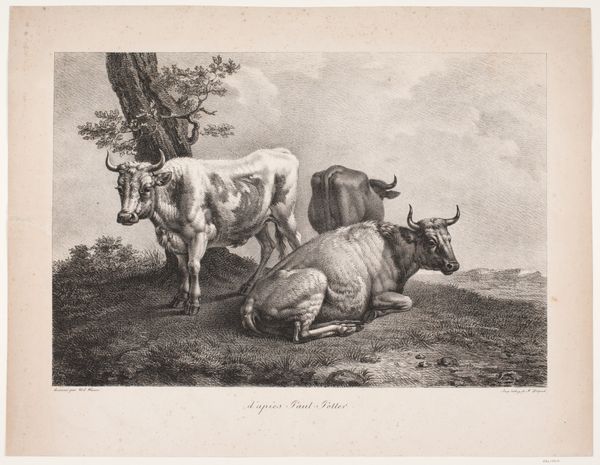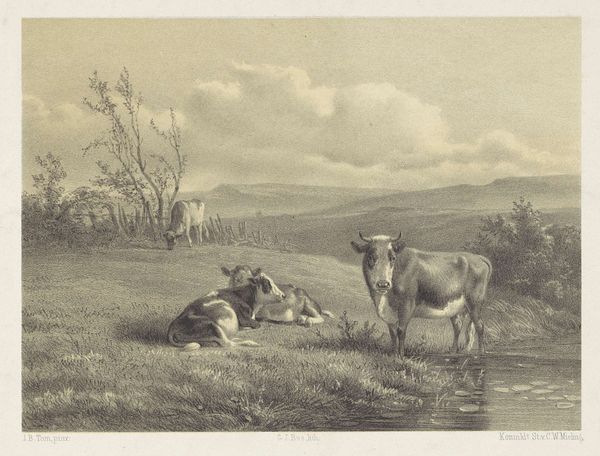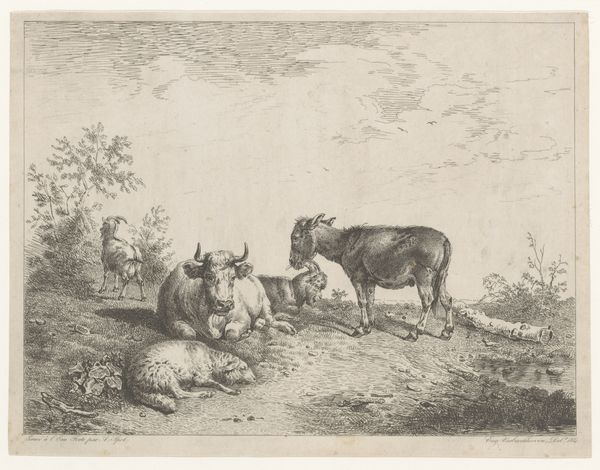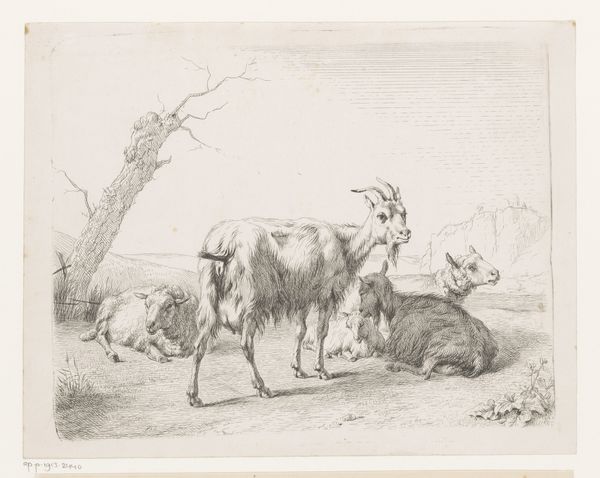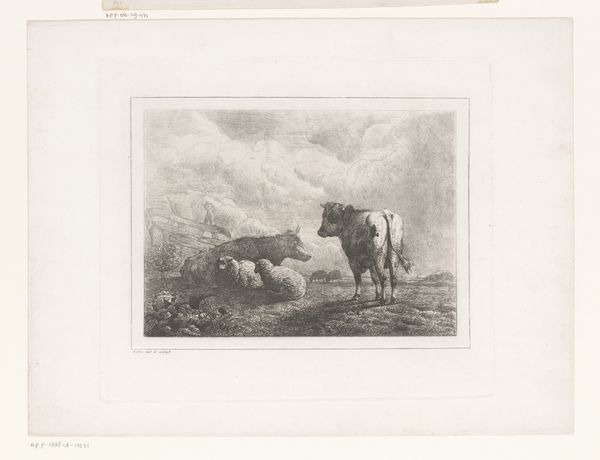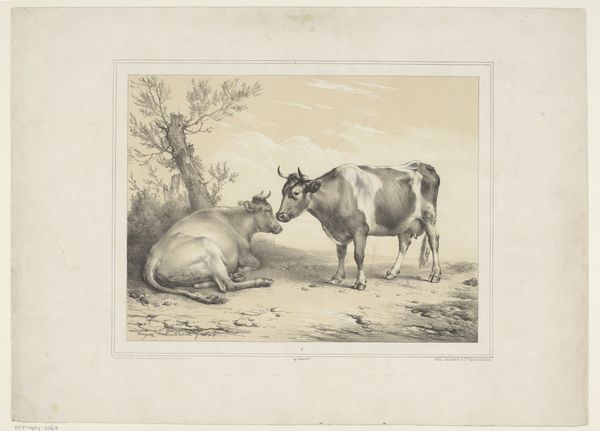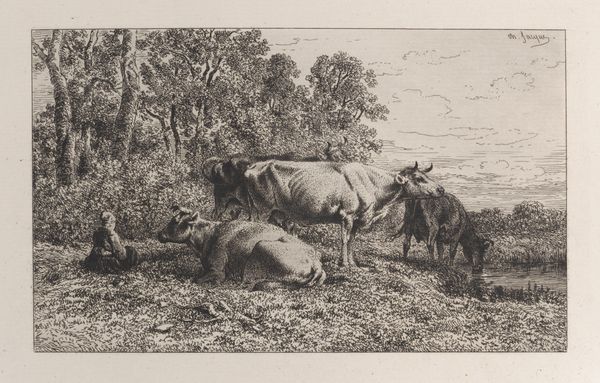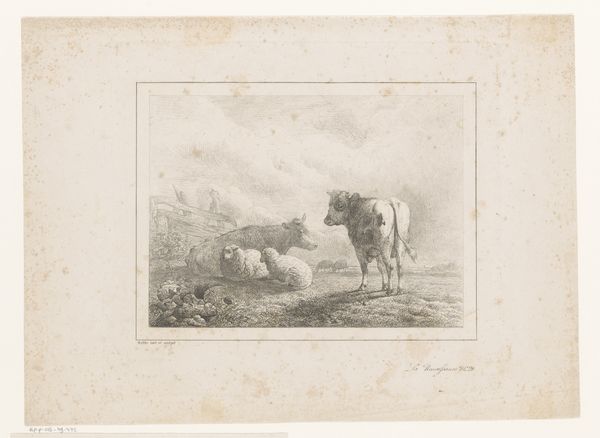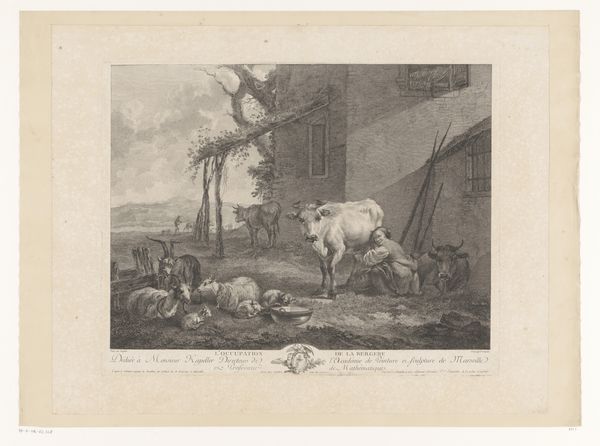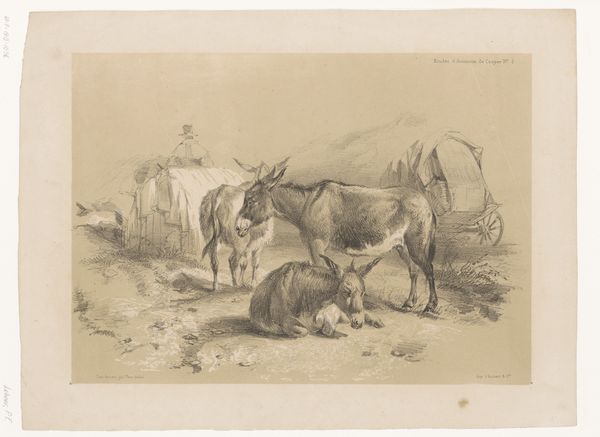
drawing, print, charcoal
#
drawing
# print
#
pencil sketch
#
landscape
#
charcoal drawing
#
pencil drawing
#
animal portrait
#
genre-painting
#
charcoal
#
surrealist
#
realism
Dimensions: height 312 mm, width 495 mm
Copyright: Rijks Museum: Open Domain
Curator: Here we have "Five Cows in a Meadow" by Joseph Zephyris Gengembre, a drawing made sometime before 1870, now held in the Rijksmuseum. The artwork appears to be executed with charcoal and pencil. Editor: It strikes me as quite serene. The muted tones and relaxed postures of the cows evoke a sense of rural tranquility. There’s something so powerfully bucolic in the simplicity of it. Curator: Yes, and within the genre-painting tradition, such scenes served distinct social functions. Rural life, when rendered idyllic, often reinforces particular social structures and norms regarding labor and land ownership. Who benefits from romanticizing farm life? Editor: The cow, in its essence, has been revered across many cultures, standing as a symbol of nurture, abundance, and maternal care. Think of ancient Egypt, where the cow goddess Hathor represented motherhood, or in Hinduism, where the cow is sacred and represents generosity. Does Gengembre play with that deep symbolism? Curator: It's possible, though the cows don't appear idealized. There's an interesting contrast here. The pastoral theme tends to sanitize rural existence. But in this portrayal, we aren't shown healthy cattle; some seem lethargic. Considering it was rendered prior to 1870, there could be some social commentary tied into that portrayal. Editor: The subtle use of shading definitely adds to their heaviness. Look at how the artist captured the texture of their hides! There's a very tactile quality, almost like one can feel the rough surface. I suppose cows also represent the material and the tangible, the physical existence and mundane tasks. Curator: Which speaks to the ongoing historical dialogue about the social conditions of labor and agricultural workers. How the cow's representation becomes part of those debates about material existence—food, production, and property. Even in this relatively quiet artwork, there’s an entire network of class struggle. Editor: I see your point. Thinking of cultural memories layered within symbols offers richer, at times conflicting, interpretations, pushing our understandings in intriguing directions. Curator: Indeed, by examining those narratives alongside art history and political dynamics, we move toward an expansive appreciation. Editor: I'm grateful for these details you pointed out, to reveal how layered even the quietest scenes can be.
Comments
No comments
Be the first to comment and join the conversation on the ultimate creative platform.
